| ________________
CM . . .
. Volume XVI Number 39. . . .June 11, 2010 
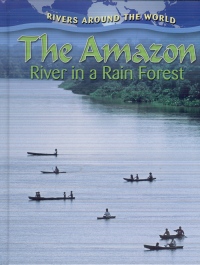 |
The Amazon: River in a Rain Forest. (Rivers Around the World).
Molly Aloian.
St. Catharines, ON: Crabtree, 2010.
32 pp., pbk. & hc., $9.95 (pbk.), $20.76 (RLB.).
ISBN 978-0-7787-7465-5 (pbk.), ISBN 978-0-7787-7442-6 (RLB.).
Subject Headings:
Amazon River-Juvenile literature.
Amazon River Valley-Juvenile literature.
Grades 5-8 / Ages 10-13.
Review by Gail Hamilton.
**½ /4
|
| |
|
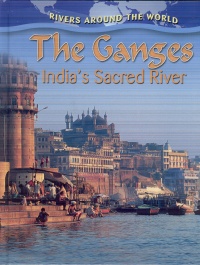 |
The Ganges: India's Sacred River. (Rivers Around the World).
Molly Aloian.
St. Catharines, ON: Crabtree, 2010.
32 pp., pbk. & hc., $9.95 (pbk.), $20.76 (RLB.).
ISBN 978-0-7787-7466-2 (pbk.), ISBN 978-0-7787-7443-3 (RLB.).
Subject Headings:
Ganges River (India and Bangladesh)-Juvenile literature.
Ganges River Valley (India and Bangladesh)-Juvenile literature.
Grades 5-8 / Ages 10-13.
Review by Gail Hamilton.
**½ /4
|
| |
|
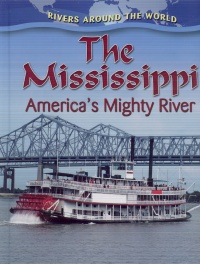 |
The Mississippi: America's Mighty River. (Rivers Around the World).
Robin Johnson.
St. Catharines, ON: Crabtree, 2010.
32 pp., pbk. & hc., $9.95 (pbk.), $20.76 (RLB.).
ISBN 978-0-7787-7467-9 (pbk.), ISBN 978-0-7787-7444-0 (RLB.).
Subject Headings:
Mississippi River-Juvenile literature.
Mississippi River Valley-Juvenile literature.
Grades 5-8 / Ages 10-13.
Review by Gail Hamilton.
**½ /4
|
| |
|
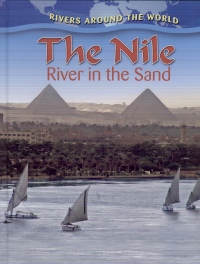 |
The Nile: River in the Sand. (Rivers Around the World).
Molly Aloian.
St. Catharines, ON: Crabtree, 2010.
32 pp., pbk. & hc., $9.95 (pbk.), $20.76 (RLB.).
ISBN 978-0-7787-7468-6 (pbk.), ISBN 978-0-7787-7445-7 (RLB.).
Subject Headings:
Nile River-Juvenile literature.
Nile River Valley-Juvenile literature.
Grades 5-8 / Ages 10-13.
Review by Gail Hamilton.
**½ /4
|
| |
|
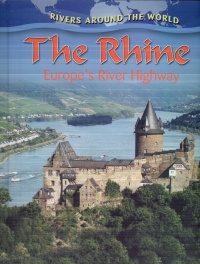 |
The Rhine: Europe's River Highway. (Rivers Around the World).
Gary Miller.
St. Catharines, ON: Crabtree, 2010.
32 pp., pbk. & hc., $9.95 (pbk.), $20.76 (RLB.).
ISBN 978-0-7787-7469-3 (pbk.), ISBN 978-0-7787-7446-4 (RLB.).
Subject Headings:
Rhine River-Juvenile literature.
Rhine River Valley-Juvenile literature.
Grades 5-8 / Ages 10-13.
Review by Gail Hamilton.
**½ /4
|
| |
|
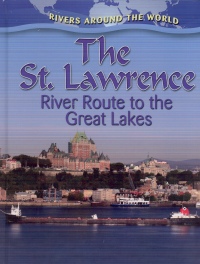 |
The St. Lawrence: River Route to the Great Lakes. (Rivers Around the World).
Lynn Peppas.
St. Catharines, ON: Crabtree, 2010.
32 pp., pbk. & hc., $9.95 (pbk.), $20.76 (RLB.).
ISBN 978-0-7787-7470-9 (pbk.), ISBN 978-0-7787-7447-1 (RLB.).
Subject Headings:
Saint Lawrence River-Juvenile literature.
Saint Lawrence River Valley-Juvenile literature.
Grades 5-8 / Ages 10-13.
Review by Gail Hamilton.
**½ /4
|
| |
|
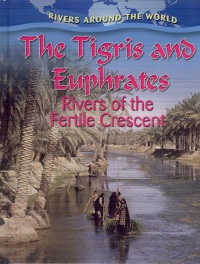 |
The Tigris and Euphrates: Rivers of the Fertile Crescent. (Rivers Around the World).
Gary Miller.
St. Catharines, ON: Crabtree, 2010.
32 pp., pbk. & hc., $9.95 (pbk.), $20.76 (RLB.).
ISBN 978-0-7787-7471-6 (pbk.), ISBN 978-0-7787-7448-8 (RLB.).
Subject Headings:
Tigris River-Juvenile literature.
Tigris River Valley-Juvenile literature.
Euphrates River-Juvenile literature.
Euphrates River Valley-Juvenile literature.
Grades 5-8 / Ages 10-13.
Review by Gail Hamilton.
**½ /4
|
| |
|
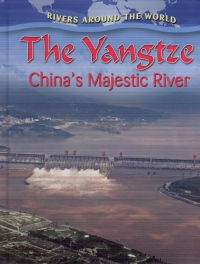 |
The Yangtze: China's Majestic River. (Rivers Around the World).
Molly Aloian.
St. Catharines, ON: Crabtree, 2010.
32 pp., pbk. & hc., $9.95 (pbk.), $20.76 (RLB.).
ISBN 978-0-7787-7472-3 (pbk.), ISBN 978-0-7787-7449-5 (RLB.).
Subject Headings:
Yangtze River (China)-Juvenile literature.
Yangtze River Valley (China)-Juvenile literature.
Grades 5-8 / Ages 10-13.
Review by Gail Hamilton.
**½ /4
|
| |
|

excerpt:
Fish from Asia are threatening the survival of indigenous fish species in the Mississippi River. Asian carp were brought to catfish farms on the Mississippi River in the early 1970s to help control algae in ponds. Floods in the 1980s and 1990s carried the carp into the Mississippi River. Because of their large size and huge appetites, the carp are crowding out native fish species, which cannot compete with the carp for food. To keep the carp from entering the Great Lakes, an electric fish barrier has been built in the waterway that joins the Mississippi River to Lake Michigan. If Asian carp were to reach Lake Michigan, they would disrupt the Great Lakes ecosystem. (From The Mississippi: America's Mighty River)
The new eight-volume "Rivers Around the World" series provides a general overview of several major rivers without delving too deeply into any one particular aspect. Each title consists of five chapters which follow a sequence: the first chapter serves as an introduction to the featured river, providing its location and size and explaining its significance; the second chapter focuses on the geographical event which shaped the river and its various tributaries, its delta and drainage patterns, and also lists some of the plants and animals which make their homes in or near it; chapter three highlights the history of the river in terms of the various people who made/make their homes in villages and cities along the river; the fourth chapter discusses the modes of travel from the past to the present as well as the commerce in the area; finally, the fifth chapter examines current issues, such as pollution, overfishing and flooding, as well as both possible and tried solutions. There is a timeline which lists important events from the formation of the river to the present. As well, each title has an identical chart which compares the major rivers in the series. "Fast facts" and sidebars provide additional information while "notable quotes" offer primary source quotations from explorers, scientists, writers such as Mark Twain, and others. The text makes for a fairly interesting read, but the books are too general to be of use in a classroom, and it is doubtful that the casual reader would select one of these books from the school or public library. While there is mention of ecosystems, ecological issues and ancient civilizations, to name a few, there is not enough information on any one subtopic, merely a skimming of the surface. Illustrations consist of maps, woodcuts, paintings, and colour and archival photographs. A table of contents, a glossary, an index and a list of books and web sites for further study are included.
Four thousand miles long and containing one-fifth of the world's fresh water, the Amazon River has over 15,000 tributaries and carries a greater volume of water than any other river. The Amazon: River in a Rain Forest examines the area's natural resources, the history of the indigenous people, and the many plants and animals that dwell in the rain forest. Today, agriculture, fishing and tourism are important as well as exports such as hardwoods, rubber and minerals. Climate change, deforestation, mercury pollution and overfishing are a few of the modern-day threats to the sustainability of the river.
The Ganges: India's Sacred River discusses the variety of ecosystems and the many animals unique to this area, some examples being the Bengal tiger and the endangered Ganges river dolphin. The river, sacred to Hindus, has several shrines and temples along its banks. It also supports crops, such as rice, sugarcane, wheat and cotton, for the millions of people who live along the river. With such large populations causing more demand on the river, some of the current issues are having clean drinking water and support for agriculture and hydroelectricity. Pollution from untreated sewage, fertilizer and pesticides, and even cremated bodies, entering the river system is also an ongoing problem.
Known as "Ol' Man River," the Mississippi winds its way through 10 U.S. states. It has been a major route for cargo ships for more than 200 years and is the main source of drinking water for 18 million people. Many prolific writers- Mark Twain and T.S. Eliot, for instance- have been greatly influenced by living on this majestic river. In The Mississippi: America's Mighty River, readers will learn the difference between the Upper and Lower Mississippi in terms of geography, vegetation, animals and land use. Other topics in this title include exploration by De Soto, Jolliet and Marquette, the river's key role in the American Civil War, the birth of the blues music genre, transportation modes such as steamboats, barges, canoes and pirogues, and the various industries in this area, steel mills, pulp and paper, farm machinery and electricity, to name a few. Flooding and pollution remain some of the Mississippi's greatest threats.
The Nile River is the site of one of the ancient world's greatest civilizations, the Egyptians. From pyramids and the Sphinx to hieroglyphics and treasure-laden tombs of pharaohs, the ancient Egyptian civilization conjures up an aura of mystery. The Nile: River in the Sand explores not only the contributions of an ancient culture, but it also features the groups that have lived along the river's banks- the Bantu, Dinka and Nuer people- as well as modern-day Africans. Other topics in this title include the formation of the river, its two main branches (the White and the Blue Nile), the fertile delta, plants and animals, and important issues, such as delta erosion, poverty, invasive species, climate change, and pollution due to chemical fertilizers.
One of Europe's most important rivers from an economic standpoint, the Rhine originates in the Swiss Alps and empties into the North Sea. First populated by Celtic and Germanic tribes and a key military border, the fertile river basin is a major agricultural area, ideal for planting vineyards. The Rhine: Europe's River Highway also highlights the region's lumber industry, irrigation techniques and hydroelectric power as well as improvements to the river, such as canals and the removal of obstacles to ensure that the river remains the most commercially viable river in the world. In the past, the Rhine has suffered from extreme pollution, but strides have been taken since the 1970s to make the river cleaner than it has been in decades. Some initiatives are a new wastewater treatment plant, restoration of the flood plain, introduction of fish ladders and restrictions on the release of chemicals into the river system.
The St. Lawrence: River Route to the Great Lakes discusses, perhaps, the most important river in Canada. Formed by glacial melt and currently home to roughly one quarter of Canada's population, the St. Lawrence acts as a border between two countries, a renewable energy source and a major shipping route. The Algonquins and the Iroquois were the first people to settle in the area, followed by the Europeans who learned about it from explorers Cabot, Cartier and Champlain. This title focuses on the St. Lawrence as a trade route, the vicinity's wealth of natural resources, and the vibrant French-Canadian culture. The 1970s were the worst years in terms of river pollution, but due to the efforts of the U.S. and Canadian governments that launched a large scale cleanup and pollution prevention programs, the St. Lawrence is now considered to be one of the cleanest rivers in the world.
Flowing from Turkey, the Tigris River joins the Euphrates in Iraq, and then together they continue in a figure-eight pattern. The region was once known as Mesopotamia and includes the ancient civilization of Babylon. In The Tigris and Euphrates: Rivers of the Fertile Crescent, there is information about the contributions of the Babylonians, which include advances in medicine (herbal remedies, bandages and minor surgeries, to name a few), a numeric system based on the number 60, which is still used today when measuring time, and Hammurabi's Code, one of the first collections of written laws, and the contributions of the Sumerians whose inventions of the wheel and the cuneiform, one of the earliest forms of writing, have impacted present-day civilizations. Other important topics are the conflicts which have arisen from time to time amongst the three countries- Turkey, Syria and Iraq- that share the rivers, the role of oil in the area's commerce, and major issues such as drought.
The Yangtze: China's Majestic River explores the history of the third-longest river in the world, from the earliest farming villages to states, dynasties, Mongol rule, Communism and the present republic. Forming a natural boundary between North and South China, the Yangtze flows through a variety of ecosystems, one of the best known being the bamboo forest, home of the giant panda. About one-third of China's huge population lives in the Yangtze region, and this has had a major effect on the environment. Acid rain, overgrazing, logging and agriculture have caused deforestation and pollution, while the construction of the Three Gorges Dam has resulted in the destruction of animal habitats and has displaced more than 1.3 million people.
Providing general information, these titles demonstrate the importance of the featured rivers and the impact that the rivers have on the lives of the people who settle near their banks. One significant common thread is environmental issues and the ways in which they are dealt with by various countries/governments. Despite having some important information to impart, it is doubtful that these books will spend much time off the shelf.
Recommended with reservations.
Gail Hamilton is a retired teacher-librarian in Winnipeg, MB.

To comment
on this title or this review, send mail to cm@umanitoba.ca.
Copyright © the Manitoba Library Association. Reproduction for personal
use is permitted only if this copyright notice is maintained. Any
other reproduction is prohibited without permission.
NEXT REVIEW |
TABLE OF CONTENTS FOR THIS ISSUE
- June 11, 2010.
AUTHORS |
TITLES |
MEDIA REVIEWS |
PROFILES |
BACK ISSUES |
SEARCH |
CMARCHIVE |
HOME |







